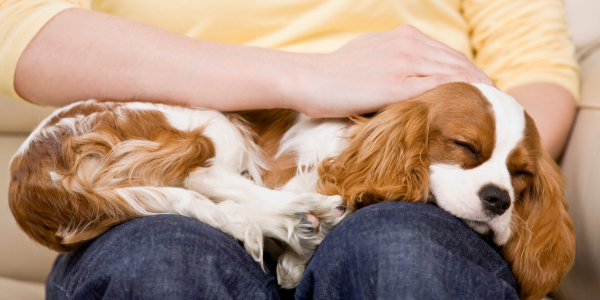 Many pets, especially as they age, grow little lumps and bumps on their skin. These bumps can occur on the skin surface, inside the layers of the skin, or just under the skin in the fatty tissue called the subcutaneous space.
Many pets, especially as they age, grow little lumps and bumps on their skin. These bumps can occur on the skin surface, inside the layers of the skin, or just under the skin in the fatty tissue called the subcutaneous space.
Technically, all of these bumps are known as tumors or masses, but don’t be scared!
Many masses have benign behavior, meaning they are not harmful or likely to spread elsewhere in the body, but some are more dangerous and are malignant.
It is almost impossible to tell what a bump is by looking at it because its identity is hidden under the surface.
It's Always Best to Play It Safe With Skin Masses
The best thing to do when you find a new lump or bump is to have your veterinarian take a look. They’ll feel it, measure it, document it in your pet’s record, and likely recommend sampling it (called a fine needle aspirate) to help find out what kind of bump it is.
Not all masses will be identified with needle samples, so your veterinarian may need to take a bigger sample of the mass, called a biopsy, and send it to a specialized lab to find out its identity.
After your pet's bump is identified, your veterinarian can recommend many possible next steps. This can include watching the bump at home to make sure it doesn’t change, removing the entire mass in a bigger surgery if they think it is dangerous, or running additional testing like blood samples or X-rays to make sure your pet is healthy.
Take Note, Take Measure, Take Pictures

Though it’s always best to have your veterinarian take a look at a new growth on your pet, sometimes this just isn’t possible immediately. Here are some tips to help keep track of new lumps and bumps on your pet.
- Make it easier to find the bump. You can do this by parting the hair and taking a photo of the mass so you can remember where it is. Marking the top of the bump with a sharpie can also make it easier to find. If your pet will stay still and the mass in an easy-to-reach spot on their body, you can use electric clippers or an electric beard trimmer to cut about a half inch of hair around the mass.
Do NOT use clippers near your pet’s eyes or mouth, don’t use scissors or a razor because it’s easy to cut your pet with those, and don’t use any sort of sharp object if you’re not sure your pet will stay still! It’s better to lose sight of the bump temporarily than hurt your pet trying to remember where it is. - Keep track of how big the growth is. The most exact way to do this is with a clear ruler or calipers. You can hold them up to the growth and take a photo of the measurement with your phone — that way you can easily record how big the bump was on a particular date.
If you don’t have a ruler, you can also pick a common object (like a coin) and take a picture of the mass next to the object to record the comparison between their sizes.
When Your Pet Needs to See a Veterinarian ASAP
Sometimes, monitoring for change at home isn’t a good idea and your pet really needs to see their veterinarian as soon as possible. Here are some reasons your pet should see the vet immediately instead of waiting:
-
The lump is growing quickly, ulcerating or bleeding
-
Your pet is chewing or licking the lump often, showing that it’s making them uncomfortable
-
The lump’s size is regularly fluctuating (shrinking, then growing, then shrinking again, etc.)
-
The lump is purplish-red or darkly colored
-
The growth is associated with or near the mammary (breast) tissue of a female pet
-
The growth is on your pet’s ear or nose, or in their mouth
-
Your pet has a history of malignant skin tumors
-
Your dog is a breed that is predisposed to skin cancers, or your white cat has a bump on its face or ears
-
Your pet exhibits a decrease in energy, appetite, or weight that began with the development or growth of the mass
-
Your pet starts vomiting, having diarrhea, or coughing
-
Your pet is showing signs of pain
Again, earlier veterinary evaluation is always the safest bet. The "lump" in the photo above looks rather "innocent," but it ended up being cancer. You can read more about it on Orchard Veterinary Group's site. But if you need to delay for whatever reason, please take into account the tips and rough guidelines above.
And whatever you do, regardless of the size, location, or cooperation level of your pet — PLEASE never attempt to remove, squeeze, or cut off a lump yourself! Trying to take off a mass at home can hurt your pet badly – it's better to leave that to the veterinary professionals!




